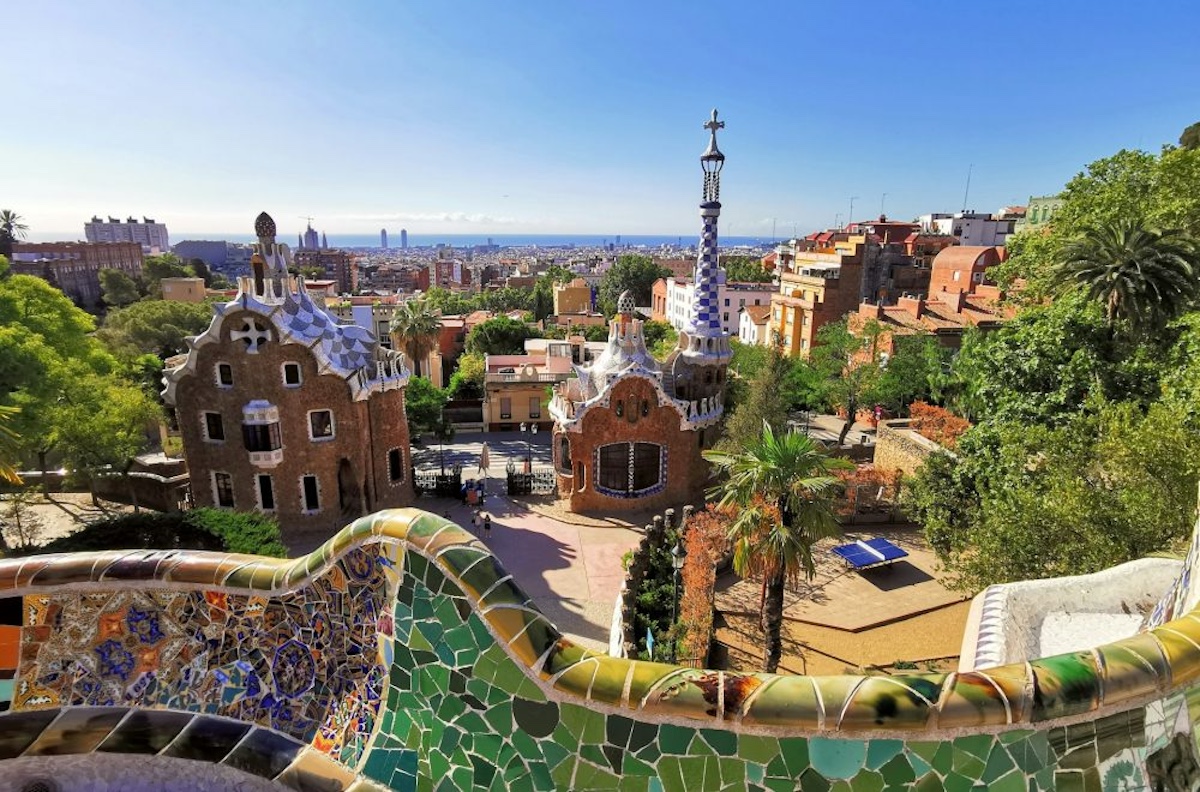
20 Things To See in Park Güell, a Self-Guided Scavenger Hunt
With structures that mimic and seem to grow right out of the landscape, Park Güell in Barcelona is often called “a playground for the mind.” And that’s creator Antoni Gaudí’s style — to make all his designs feel like they’re part of nature.
The result? Possibly the prettiest park in Europe. Well, at least in the top 10.
Gaudí’s playful design wasn’t originally going to be a world-famous tourist attraction drawing some 9 million visitors a year.
It was intended for Eusebi Güell’s housing development. Güell was a businessman who wanted to create a community for rich people in Barcelona to buy a plot of land, build a home, and live in harmony in the Collserola Mountains.
Unfortunately, only Güell and Gaudí bought plots of land, so the project failed. But from that failure came one of Gaudí’s greatest creations. Park Güell was turned into an actual park for locals and tourists, so we all get to experience this “playground for the mind.”
Want to see everything in Park Güell? There are lots of interesting art pieces and landmarks if you know where to look. Your tour guide can help you find them all on a skip-the-line guided tour or you can look for them on your own.
Either way, save this list of 20 things to see at Park Güell on your very own scavenger hunt — and don’t forget to snap a picture of each one!
1. The Dragon Stairway
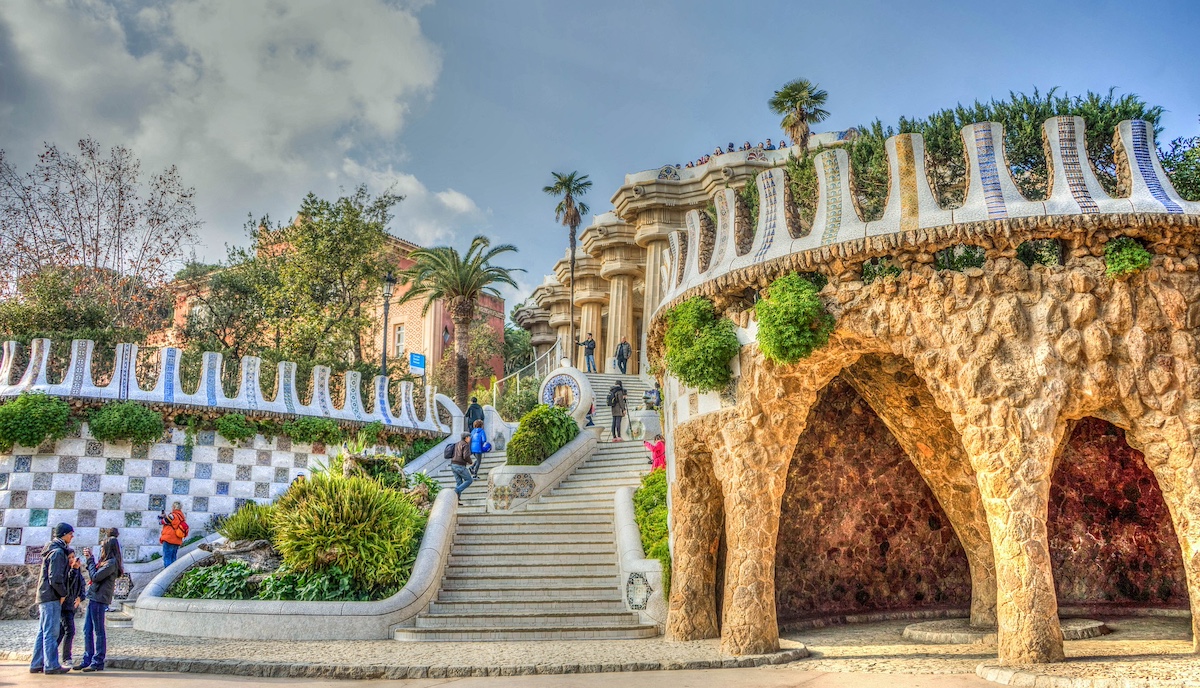
Marking the main entrance of Park Güell is a twin staircase that leads to the Hypostyle, which Gaudí designed to function like a market for the housing community. It’s split into three sections and decorated with sculptures and fountains you’ll want to snap photos of as you climb them.
Tip: You can get the shot above when you first walk through the park gate — it’s the best way to get the full effect of the staircase.
2. El Drac
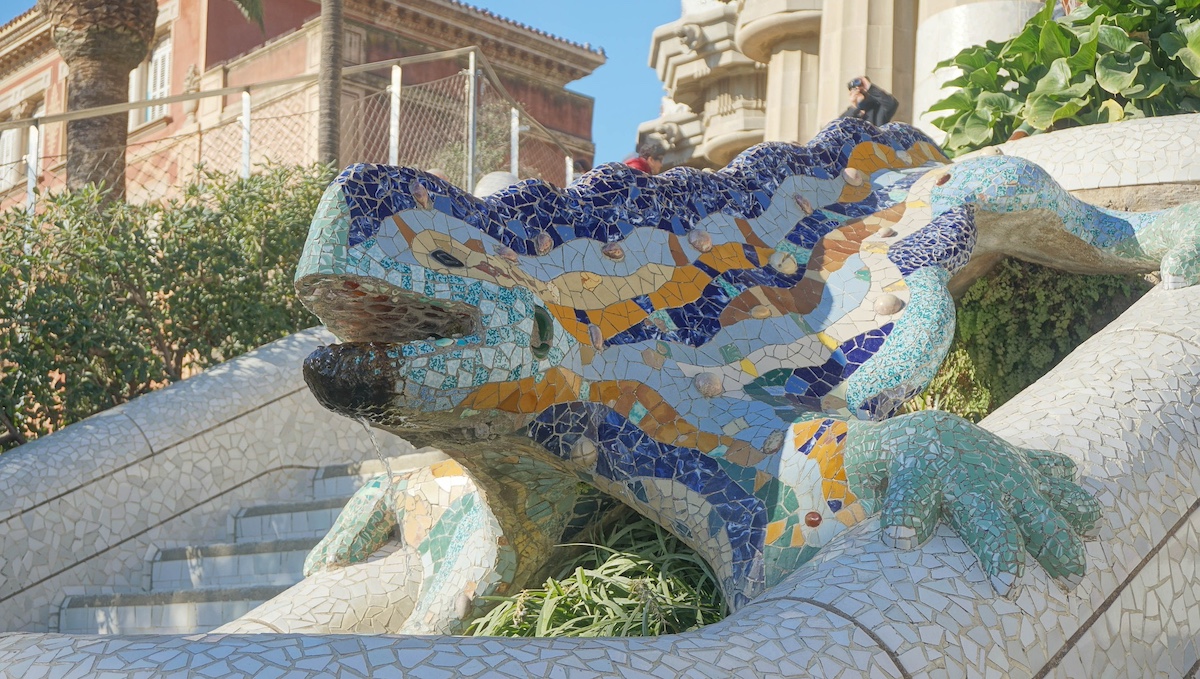
Speaking of dragons (or lizards), the mosaic-covered El Drac is on the second landing of the staircase and is one of the most-photographed features in the park. Be sure to get your selfie with the dragon!
3. Broken mosaics
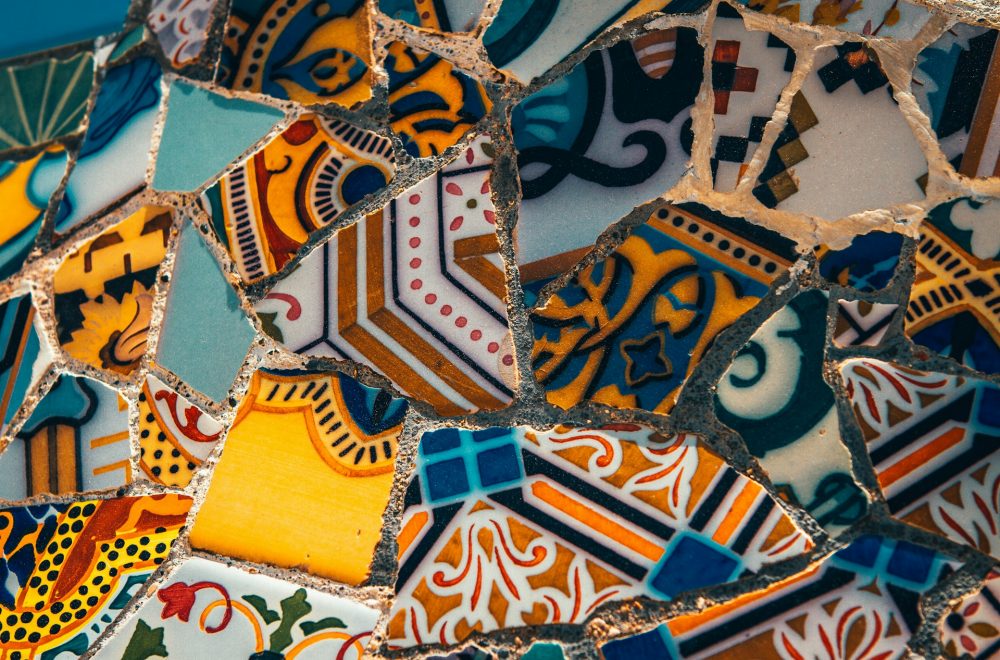
From El Drac to the ceiling of the Hypostyle, try to spot all the places where Gaudí uses this broken mosaic technique called “trencadís.”
4. Doric columns
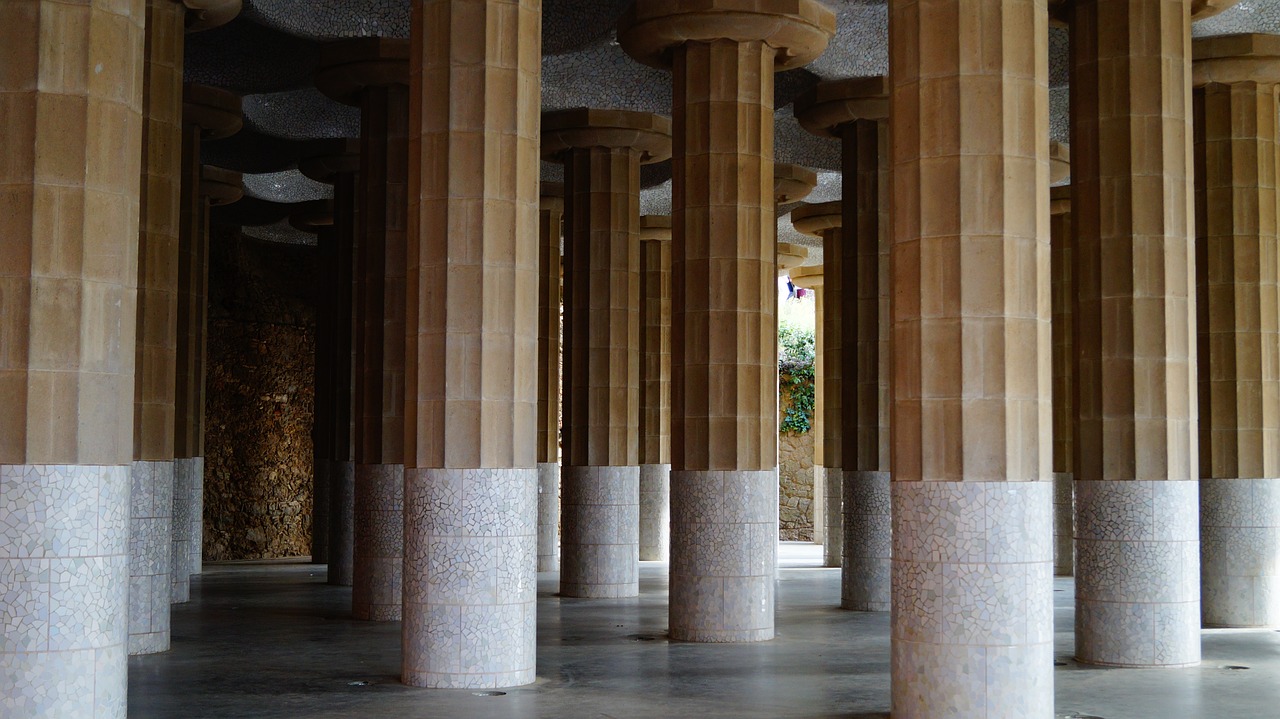
Gaudí was inspired by classic architecture, but he put his own spin on it with the 86 Doric columns he designed for the Hypostyle. Instead of following the rules of classical composition and keeping these columns straight, he built them on a slant.
5. An octopus
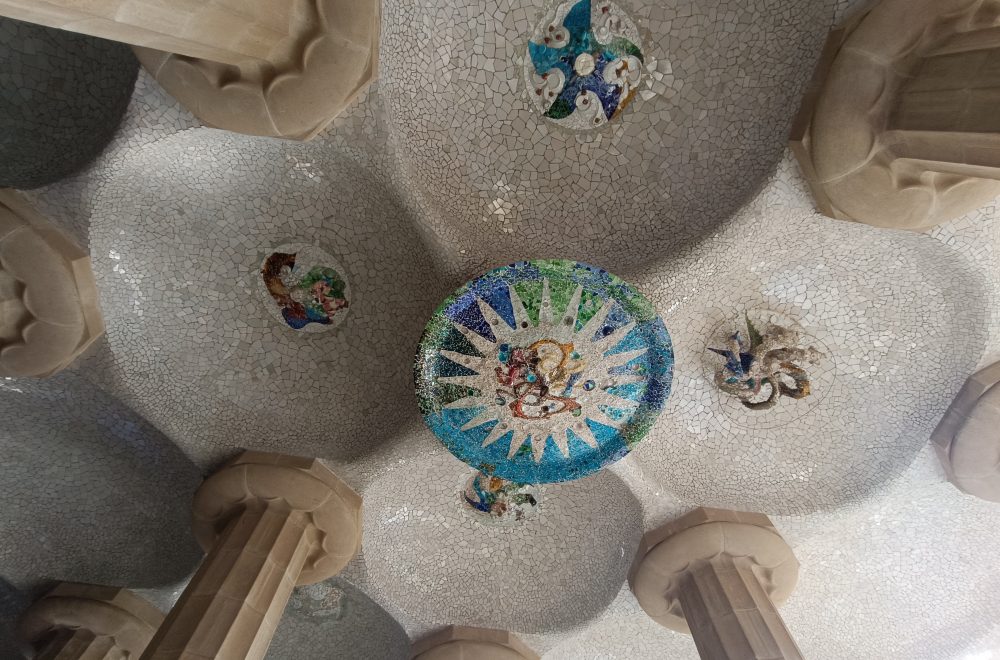
While you’re in the Hypostyle, be sure to look up to find the octopus design on the ceiling.
6. Lion heads
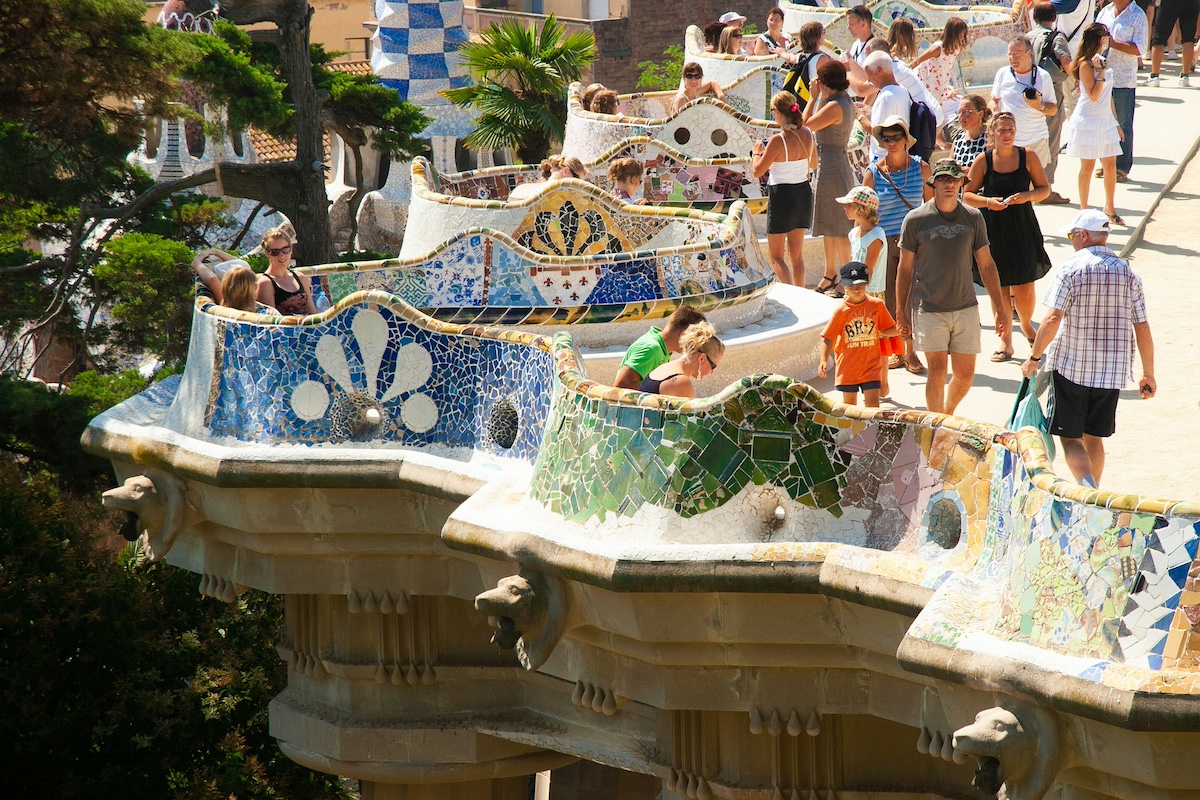
In Park Güell, there are dragons, lizards, octopuses, and even lion heads. But these stone lion heads aren’t just sculptures — they’re the spouts of a water drainage system.
7. Serpentine bench
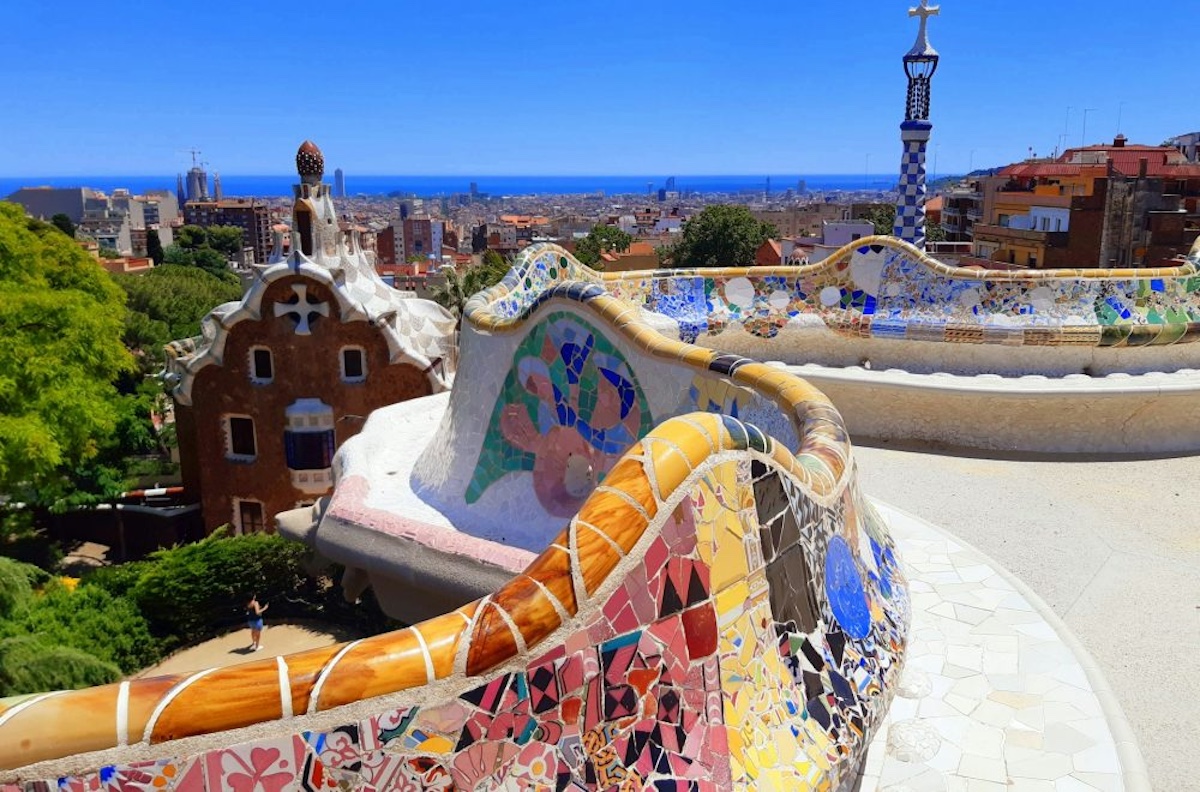
If you’ve visited Gaudí’s Casa Batlló, the shape of this 360-foot long bench might remind you of the serpentine shape of the house’s roof. It’s no secret that Gaudí had a fascination with dragons, possibly because of the legend of Saint George (Sant Jordi in Catalan), where the patron saint of Catalonia slayed a dragon to save the village and sacrificial princess.
8. Tiny holes in your seat
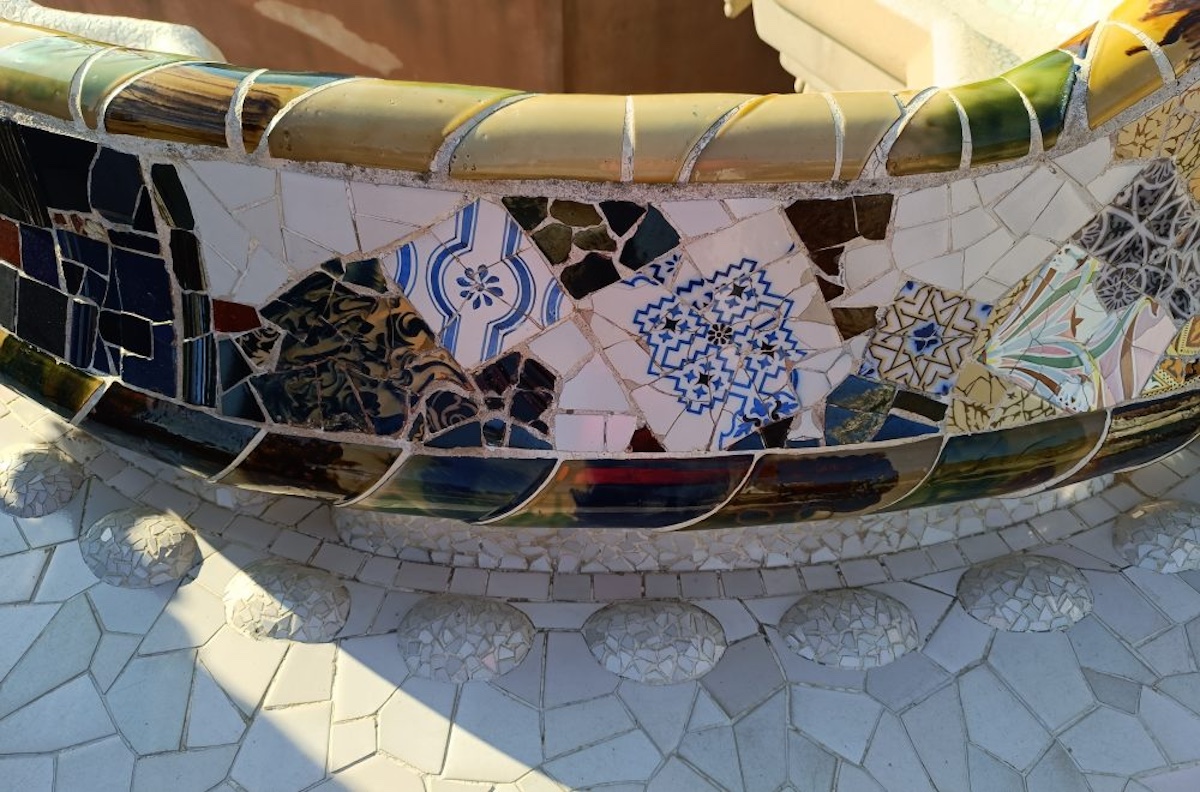
The serpentine bench was meant to encourage conversation between people who came to sit in Nature Square. Since no one wants to sit on a wet bench, Gaudí designed it to collect rainwater and have it drain out through holes in the backrest. Remember those lion heads? They’re the spouts on the other side of the bench that drain the water.
9. Views from the Nature Garden

Look out at the rooftops of Barcelona and snap a picture. There’s nothing more to say here.
10. Ocean wave columns
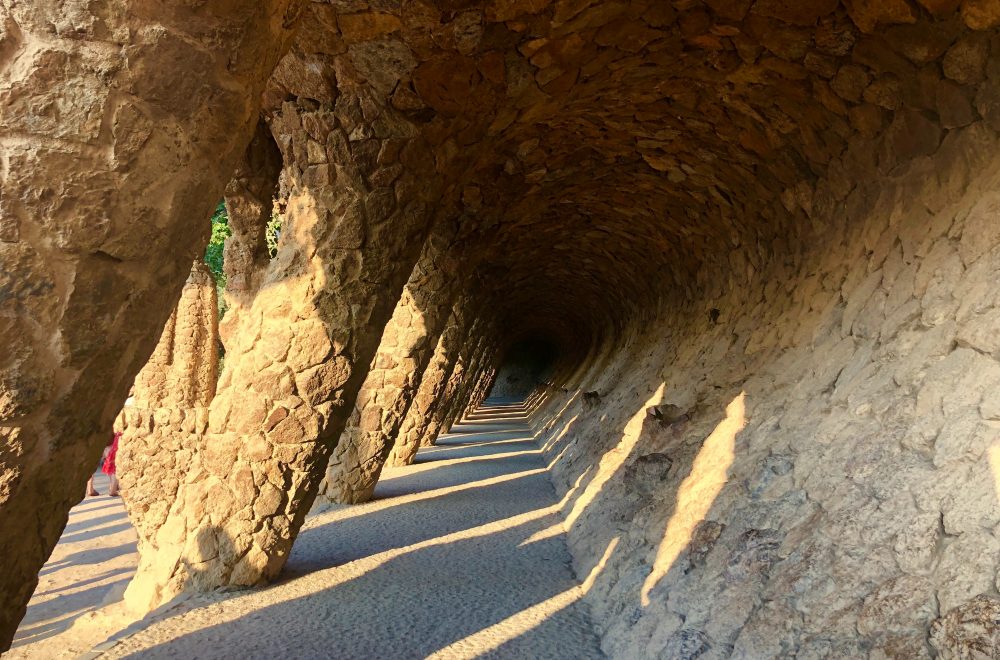
To enter the gardens of the Larrard House — Güell’s former home — you have to walk through the Washerwoman’s Portico, which looks a lot like an ocean wave with its slanted stone columns.
11. The Washerwoman statue
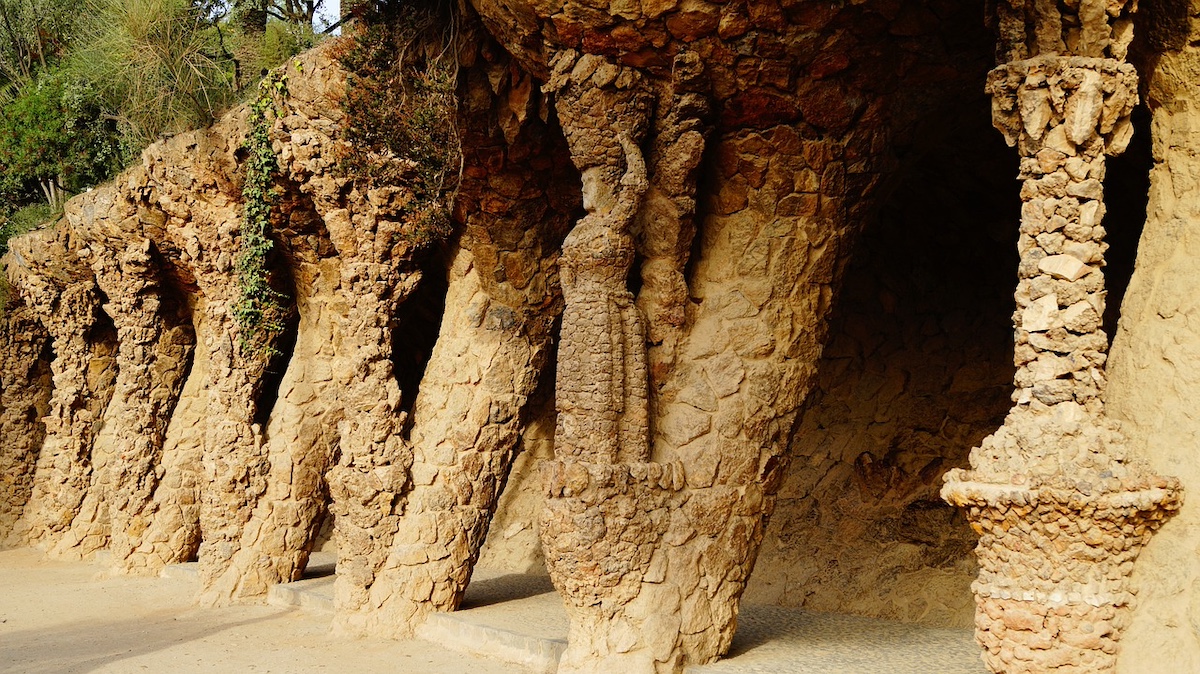
One of the columns of the Washerwoman’s Portico is a statue of a washerwoman carrying a laundry basket on her head. It’s easy to miss, so you need to look closely at the columns if you want to cross this statue off your scavenger hunt list.
12. The Low Viaduct
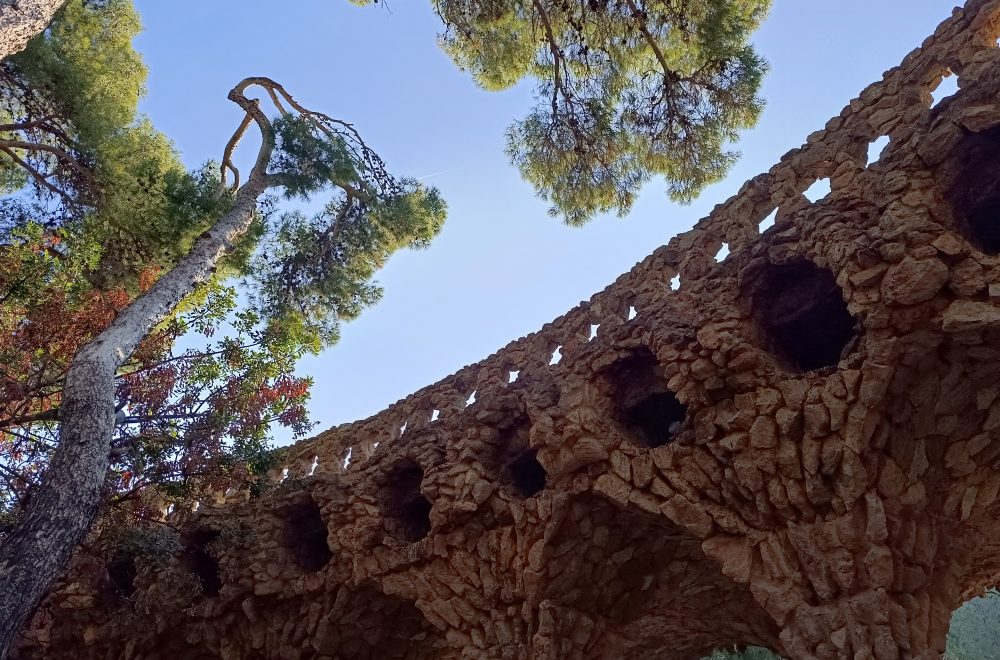
Gaudí created a system of viaduct paths to easily connect the different levels of the park. They were originally designed to enable people and cars to move around safely, but today they make beautiful walking paths for visitors to stroll on. The Low Viaduct (Pont de Baix) is a bridge supported by columns of stone.
13. The Middle Viaduct
The Middle Viaduct (Pont del Mig) resembles a natural cave at the bottom, while there’s a bridge and road at the top.
14. The High Viaduct
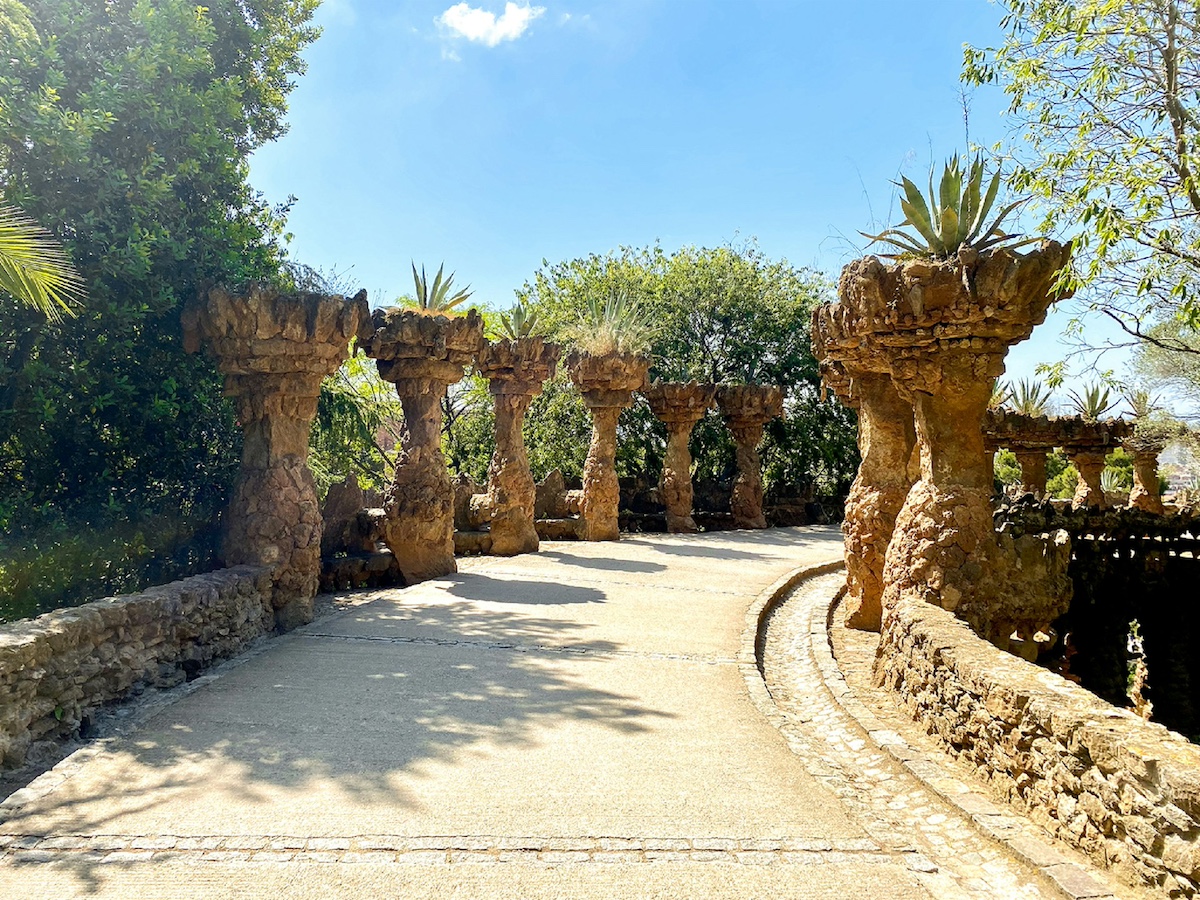
The High Viaduct (Pont de Dalt) is a lovely bridge lined with stone columns that look like the trunks of palm trees.
15. Austria Gardens
Once intended to be a plot of land on the estate, this area was turned into a plant nursery when Park Güell opened as a park.
The gardens got their name from a donation of trees from Austria in 1977, and you have a great view of the Gaudí House Museum and Larrard House.
16. The Larrard House
Eusebi Güell (the guy the park was made for, remember) lived in this house until his death in 1918.
After Park Güell opened to the public, the city turned the house into a public school called Baldiri Reixac in 1931.
17. Gaudí House Museum
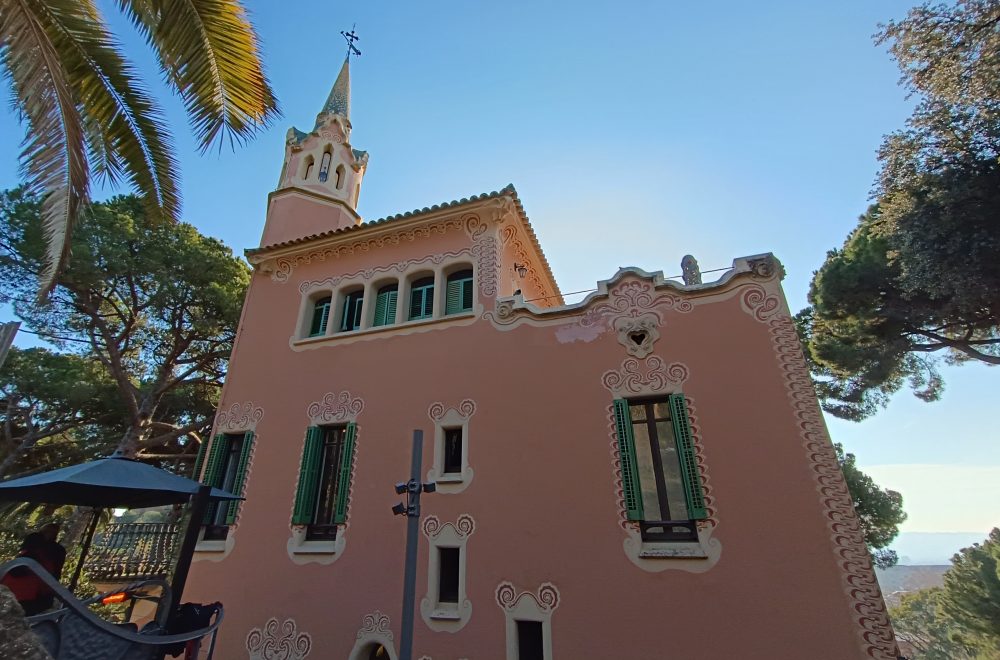
Gaudí bought a plot of land and lived in his home in Park Güell from 1906 to 1925. It opened as a museum in 1963.
18. Trias House
The Güell family lawyer, Martí Trias i Domènech, owned this white house with emerald green shutters. Today, it’s still owned by descendants of the lawyer and remains a private residence.
19. The Three Crosses
At the highest point of Park Güell, you’ll find three stone crosses that actually mark where Gaudí wanted the chapel in the housing community to be built.
20. Actual reptiles
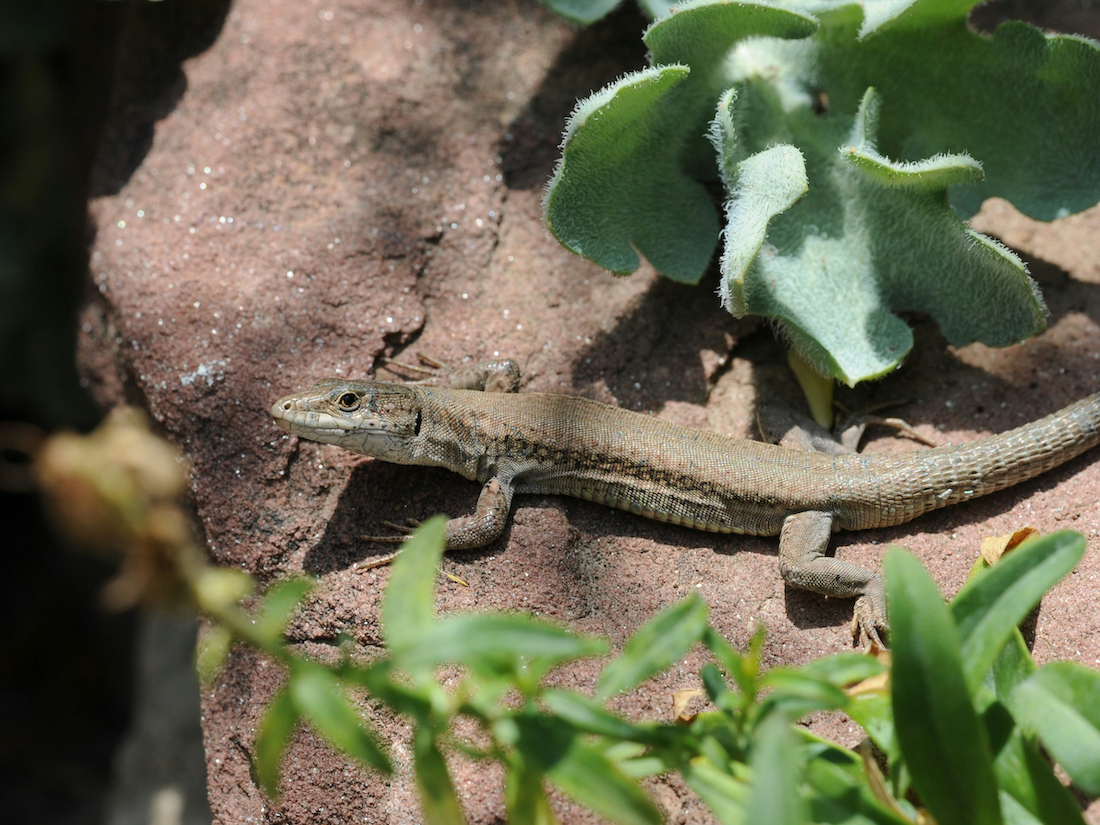
Gaudí was inspired by nature, so it’s only natural (pun absolutely intended) that you’ll spot some of the creatures that inspired his work.
There won’t be dragons, but there will be lizards and geckos, namely the Moorish and Mediterranean house gecko and Iberian wall lizard.
See beauty like Park Güell all over Barcelona
Park Güell isn’t the only place you’ll find Gaudí’s dreamy architecture in Barcelona. Pair your Park Güell Tour with a tour of the Sagrada Família. Once you’ve seen what are considered to be the architect’s two greatest achievements, take a Gaudí Architecture Walking Tour through the city to see how he’s left his mark elsewhere in the Catalan capital.